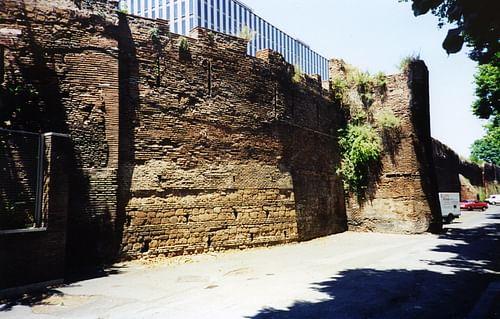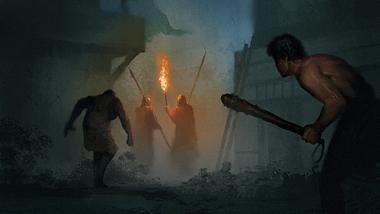The cohortes urbanae (urban cohorts) were a body of troops garrisoned at Rome, which was created by Augustus to provide additional security for the emperor and city in general. Expanding in the reigns of subsequent emperors the force was responsible for maintaining public order in the capital and other cities they were stationed at. Effectively acting as a police force it was also occasionally employed in battles and even involved itself in the succession of emperors.
Creation
Near the end of his reign (27 BCE - 14 CE), Augustus created the first three urban cohorts, likely recruiting them from the existing Praetorian Guard (cohortes praetoriae) which was also stationed in Rome. The precise date of their foundation is not known, but the first reference in literature is from Suetonius who mentions that each member received 500 sesterces in Augustus' 13 CE will.
As there were nine cohorts of the Praetorian Guard, the urban cohorts were given the numbers X, XI, and XII, which were maintained even when the Guard was later expanded by another three cohorts. Besides providing an additional military force which the emperor could call on in cases of emergency or revolt, they would later be used, on occasion, in both civil and foreign wars by later emperors.
Command Structure & Camp
The urban cohorts were commanded by the urban prefect (praefectus urbi). As this position held senatorial rank, the holder was above the Praetorian prefect and he was responsible for all criminal cases not just in Rome but all of Italy. Thus the commander of the urban cohorts had significant power, and when emperors were absent on campaign, they were, in effect, the most senior officer in the capital. Each cohort was commanded by a tribune and six centurions. As with the Praetorian Guard, members were largely recruited from Italy to ensure greater loyalty. The term of service was 20 years, and they received 50% more pay than ordinary legionaries but half the pay of the more prestigious Praetorian Guard, with whom they shared a camp, the castra praetoria, in the north-eastern suburbs of Rome. In 270 CE the urban cohorts were given their own camp in the city by Aurelian, the castra Urbana, located on the Campus Martius. It is likely, too, that small detachments were stationed in watchhouses across the city on a rotation basis.

Function
The primary function of the cohortes urbanae, as with most other troops not involved directly in combat, was to maintain public order. There are no surviving records which detail exactly what the urban cohorts did, but one can imagine in a large city like Rome there were plenty of instances of minor crime and disturbances to deal with as well as crowd-control duties at such popular events as gladiator games at the Colosseum and chariot races at the Circus Maximus. There might also have been more serious events to deal with such as food riots and demonstrations. Their role as a body which kept public order is largely assumed from the absence of any other military function or guard duties related to the emperors rather than direct evidence from Roman writers. In addition, the fact that their commander was responsible for criminal cases in the city would suggest that the urban cohorts would have sought out and arrested criminals for trial.
The role of policing the capital was a new one, though, and the difficulties of what exactly that entailed is evident in the resignation of the prefect Valerius Messalla Corvinus, after only six days in office on the grounds that he was not clear how to fulfil his duties. The first permanent commander of the urban cohorts was Lucius Calpurnius Piso, appointed in 13 CE.

Evolution
As with the Praetorian Guard, the urban cohorts found time to meddle in politics and they supported or defied certain emperors, starting with the turmoil which followed Caligula's assassination in 41 CE. Claudius gained their support, and perhaps as a consequence, they were expanded with another cohort added to their ranks. During the reign of Nero (54-68 CE) they were expanded again and this time reorganised into seven 500-man cohorts bearing the numbers X to XVI. The tinkering continued with Vitellius reshuffling the force into four 1000-man cohorts in 69 CE and mixing in some veteran legionaries. With Rome now perhaps a little overpacked with troops, Vespasian and his successors Titus and Domitian decided to remove two cohorts and station one each at Carthage and Lugdunum (modern Lyon), both provincial capitals, and the latter a major mint. At certain times, probably to protect grain shipments, urban cohorts were deployed at Ostia and Puteoli too.
Yet another expansion, in fact the last change, came during the reign of Septimius Severus (193-211 CE) with four cohorts being maintained but each now consisting of 1,500 men. The demise of the urban cohorts came in the aftermath of the Battle of Milvian Bridge in 312 CE. They and the Praetorian Guard had supported Maxentius, and so the victor Constantine I disbanded the Praetorians and greatly reduced the significance of the urban cohorts in Rome. The two cohorts in the provinces had likely already been disbanded a century or so earlier.
